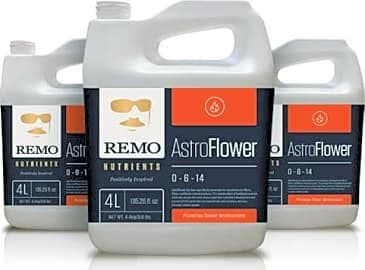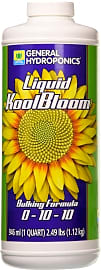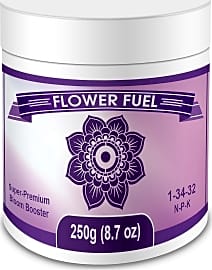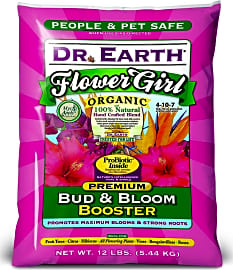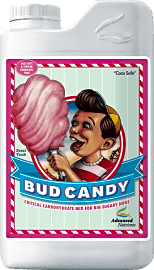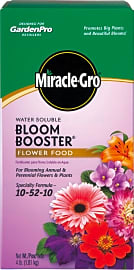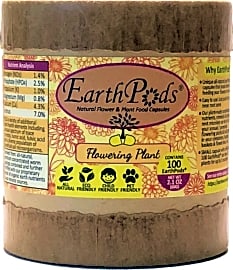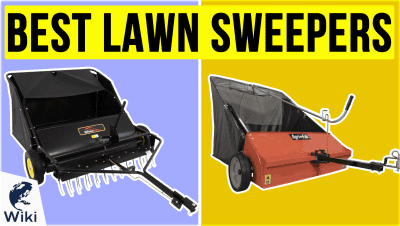The 10 Best Bloom Boosters

This wiki has been updated 37 times since it was first published in September of 2015. Whether you're cultivating flowering or fruiting plants, one of these bloom boosters will give them the added nutrients they require to realize their full potential season after season. Packed with essential minerals, microbes, and vitamins, they are specially formulated to increase harvest size, encourage healthy root development, and even brighten colors and sweeten fruits. When users buy our independently chosen editorial choices, we may earn commissions to help fund the Wiki.
Editor's Notes
August 12, 2020:
With minimal movement in the category over recent years and our list already stacked with great selections, our rankings for this page didn’t change too much during this round of updates. However, we did reconsider the positions of the Advanced Nutrients Big Bud and General Hydroponics Liquid Kool, and moved them further up our list. We also decided on removing the JR Peters Jack’s Classic No. 4 and Growth Science Nutrients Rock Solid to make room for two options from Remo Nutrients: the Remo Nutrients AstroFlower and Remo Nutrients Nature's Candy — a high-quality pair of additives that present stiff competition for the more-expensive Advanced Nutrients Big Bud and Advanced Nutrients Bud Candy.
A few things to think about for this category:
Feeding Method: While traditional options – like the Dr. Earth Flower Girl – can be mixed into your growing medium at the start of the year, allowing their nutrients to be released slowly, and leeched up by the plants they serve over the span of the growing season, choices like these seem to be less popular than liquid or water-soluble solutions that are administered manually over the course of your plant’s life.
For one thing, liquid and water-soluble bloom boosters are the only option available to growers who use any sort of hydroponic system, but even in the case of gardeners using soil and soilless mediums, growers will often prefer this style of additive because it gives them more control over the growing process. Typically, they’re absorbed via your plant’s roots, but some options are also rated for foliar feeding, including the Miracle-Gro Flower Food — although some users have noted that it can leave an unwanted residue on their leaves.
The EarthPods Best Easy presents an easy slow-release alternative that can be implemented even when your plants have already been potted: capsules that you bury near the base of your plant, releasing nutrients around its root zone.
Organics: Organic fertilizers like the Dr. Earth Flower Girl and EarthPods Best Easy are often favored by environmentally- and health-conscious users looking to cash in on the myriad of benefits associated with this style of crop production. However, it should be noted that organic fertilizers frequently employ animal products, so strict vegans and plant-based-diet practitioners may want to consider settling for a quality chemical or hybrid bloom booster – like the Advanced Nutrients Big Bud, Remo Nutrients AstroFlower or General Hydroponics Liquid Kool – and make sure that they hit their plants with a solid 14-to-21 day flush, before harvest.
Feeding Programs: Just like human beings and other animals, plants can only absorb a certain amount of nutrition at a time, and anything that’s fed to them beyond that point will either run off uselessly, or be absorbed and cause chemical burns. With that in mind, while you still want to make sure you’re providing your plants with absolutely everything they want, you don’t want to give them too much.
Savvy growers, with a solid grasp of chemistry and plant biology, will be able to calculate their plants’ needs and design a feeding schedule for them based on the nutritional information provided by the labels on their fertilizers and additives, not unlike the way dieticians put together meal plans for elite athletes. But if you’re new to the hobby, or just too busy to be bothered figuring out where to start with all that, then your best bet is likely to stick to a single brand and not deviate from (or, certainly not exceed) the recommendations prescribed by their feed chart.
Many users have used General Hydroponics for decades, and with great success, but Advanced Nutrients is often considered to be the king of the category when it comes to chemical fertilizers, although its offerings can be quite expensive. Remo Nutrients is a Canadian company that’s relatively new to the market, but many users have suggested that this newcomer is presenting stiff competition for Advanced Nutrients, at a significantly reduced price.
Some companies offer combo packs – like the Fox Farm Nutrient Trio – which combine their basic chemical fertilizer with a selection of additives, which can be an easy way to get started.
April 18, 2019:
We updated this list to reflect the most dependable formulations available and added EarthPods Best Easy for their jam-packed proprietary formula and ease of use, which involves simply planting a capsule rather than having to measure out specific portions. It also comes in a recyclable container and is easily stored on a shelf.
Fox Farm Nutrient Trio is good for green thumbs who want a value pack that does more than just encourage ample blooms, while Jack's Classic No. 4 is an extremely reliable option that's helpful for those just breaking into plant tending. Element Flower Fuel and Advanced Nutrients Bud Candy nabbed the top spots due to their versatility and exceedingly thoughtful, enriching formulas, and Miracle-Gro Flower Food presents a tried and tested selection for the budget-conscious.
Growing Your Best Garden Ever
As much as gardening can help you, of course it's up to you to help your garden.
Gardening can be both a challenging and rewarding activity, with the sensation of the latter often predicated by the level of challenge faced. From growing the simplest bed of wildflowers in the spring to cultivating a perfect rose bush over the course of many years, the process of raising a garden can be as involved as you would like. The satisfaction you reap from looking out over your robust, colorful garden can do wonders for your mental and emotional health; multiple studies have conclusively linked regular gardening with an overall happier disposition and positive attitude.
Gardening, which according to the Centers for Disease Control and Prevention counts as a moderate-intensity level activity, can also do wonders for your physical health. As little as two and a half hours spent gardening each week can contribute to reduced blood pressure, lower obesity risk, diminished osteoporosis issues, and many other benefits as well.
And then of course there are the many positives associated with raising an edible garden. Growing your own fruits and vegetables takes a good deal of initial effort and regular maintenance to help ensure you achieve a decent harvest, but it can save you a considerable amount of cash in the long run. For the same price as a single trip through the produce aisle, you can raise several plants that will bear plentiful fruit; your costs will be a fraction of retail prices if you grow your foods all the way from seeds. And there's no comparison between the taste of the foods you lovingly raise yourself and the produce found in the grocery store, which is often bland, flavorless, and ripened using ethylene gas.
As much as gardening can help you, of course it's up to you to help your garden. Establishing a healthy, resilient garden means carefully selecting the right soil for your beds or planters or selecting the right plants for the soil of the ground at your property. It means ensuring your plants get sufficient sunlight, it means establishing an idea watering cycle, and it means providing any physical support a plant (such as a tomato or pea plant) might need.
When it comes time for the flowers to bloom or when the harvest looms near, making your garden look its best and produce its largest, tastiest foods, it means using a great bloom booster, too.
Bloom Boosters For Flowering Plants
During a plant's growth cycle, most of the fertilizers that are recommended for ideal foliage -- including robust stems and stalks and large, lush leaves suited for proper photosynthesis -- are rich in nitrogen. A good bloom booster, on the other hand, is packed with phosphorous, the single best nutrient for encouraging a plant to produce large, vibrant flowers. Phosphorous helps with everything from water movement throughout a plant to effective chlorophyll production.
Consider how for long a given booster will feed a plant before choosing it.
The best time to apply a bloom booster to a flowering plant is right as its flower buds begin to form. Remember, these boosters won't necessarily encourage more flowers to grow, but they will help those blossoms the plant has already begun to produce to grow into large, healthy blooms that look great and last well.
When picking the right bloom booster for your flowering plants, first decide if you want an organic option or if you're alright with a bit of assistance from science. Then consider concentration levels. For some plants, such as those in planters as opposed to those in the ground, certain bloom boosters might be too potent. Don't burn a plant you're trying to help by exposing it to too much phosphorous.
And always remember to stop applying a bloom booster to any perennial plant as the weather starts to turn colder. These plants need to spend a portion of the year in a relatively dormant state, so too much bloom booster can actually be a bad thing in terms of a plant's long term health. For this reason, certain slow release, long lasting bloom boosters may actually be a poor choice. Consider how for long a given booster will feed a plant before choosing it.
Bloom Boosters For Enhanced Food Production
Whether you are growing tomatoes, peppers, watermelons, or many other types of food, a bloom booster can help your food plants grow faster and to produce larger, tastier fruits and vegetables that still cost much less than you would pay at a grocery store.
Many bloom boosters will direct growth toward the leaves and stems of such plants instead of down into the roots you're hoping to harvest and enjoy.
Before we discuss which bloom boosters to choose for an edible garden, note that special care should be taken for helping root vegetables grow. Many bloom boosters will direct growth toward the leaves and stems of such plants instead of down into the roots you're hoping to harvest and enjoy.
For a leafy plant, such as kale or lettuce, look for a variety richer in nitrogen than phosphorous. Nitrogen will encourage those edible leaves to grow quickly without losing their flavor profile or nutrient content. For fruiting plants, you can begin with a nitrogen rich formula, but you should switch to a phosphorus rich bloom booster once the first buds start to appear.
It's always advisable to use an organic bloom boosting formula with a plant you will be eating, though many non-organic options are considered safe, so weigh the importance of organic food versus budget issues and make your own decision. And with most food plants, you don't need to worry as much about over use of a bloom booster, as almost all food plants die out at the end of their harvest cycle anyway.


